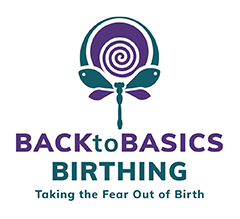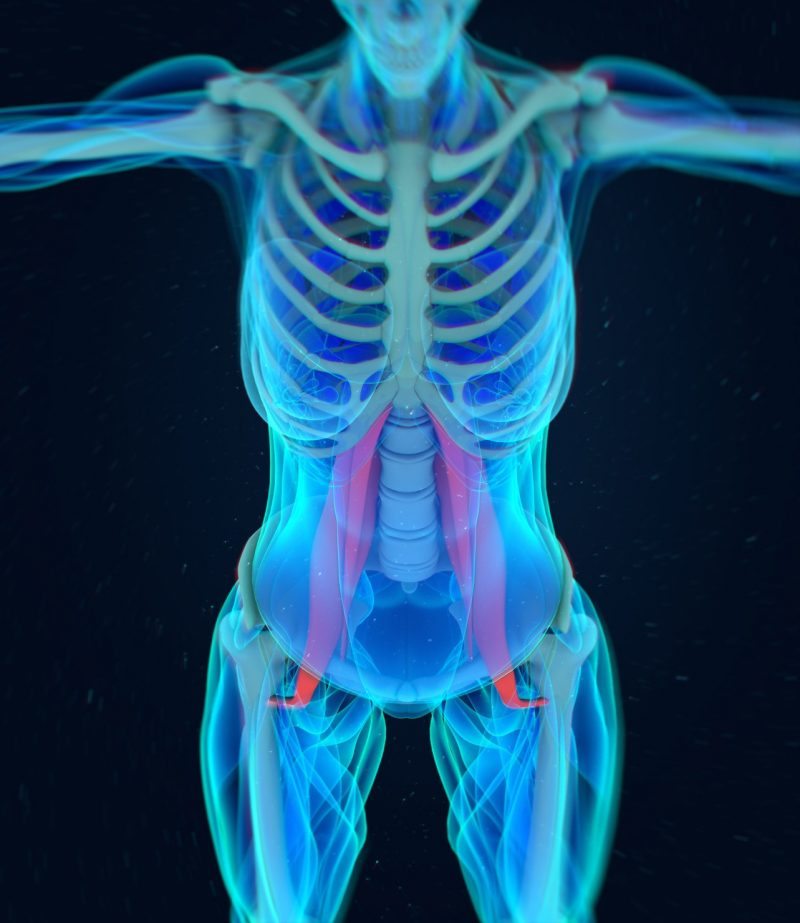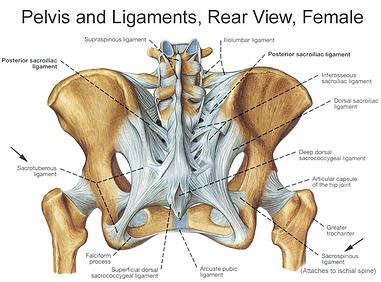Contact Vicki
If you have any questions or would just like more information please don't hesitate to get in touch by clicking the button below and filling out the contact form.
Contact Vicki

Preparing for birth is like preparing for a marathon.
You need to prepare both your mind and your body.
In your mind, you need to release fear, which creates tension, producing more pain, creating more fear, which starts a whole vicious cycle in the mind and body as described by British Obstetrician and leading advocate of natural birth, Dr Grantly Dick-Read in his book ‘Childbirth Without Fear’.
However, the physical body is just as important during pregnancy for a more positive labour and birth.
One of the important physical aspects of the body during pregnancy is the pelvis. Your pelvis is not one fixed bone, it is made up of the Sacrum, Coccyx and the two hip bones (one on the left and one on the right) joined together by the sacroiliac joints at the back and the pubis symphysis at the front.
The pelvis as you can see in this posterior view also has many different ligaments, which hold the bones together.
In this diagram all the shaded grey areas are the ligaments at the back of the pelvis (the posterior side) and they are holding those bones together. During pregnancy these ligaments can become increasingly tight as they are constantly overworked due to the added weight and posture of the baby and uterus. On top of that, if the muscles are tight particularly around the glutes (bottom), then the ligaments (especially the sacrotuberous ligament) are going to be taut and this will reduce range of motion and cause the sacrum and the coccyx to move inwards. This will then reduce the space in the pelvis so it makes it harder for baby to move into the pelvis and harder for baby to rotate into an optimum position. This is why it is import to have regular massage during pregnancy to ensure that these ligaments continue to be strong, because they need to be, but are also more flexible and able to support a stable yet moveable pelvis.

Surrounding the pelvis are really important muscles which help to stabilise the pelvis, but I want to just focus on the psoas muscles (pronounced so-as), which also works to send messages back to the central nervous system.
The psoas major muscles are quite large muscles and are the only muscles that connect your spine to your leg on either side of the spine. The psoas connects from the last four vertebrae of the spine between the pelvis and the ribs and then wrap around to the front of the pelvis and drop down to attach at the lower end to the top of the thigh bone.
The iliopsoas is a hip flexor and externally rotates the hip and the psoas (major) part of the muscle assists in lumbar extension and moves the ribs forward into a thrust, lifting the chest. When these muscles contract they will shorten, when the muscles relax they will lengthen and release tension. The psoas is shortened more so during pregnancy due to the anterior pelvic tilt, as your uterus expands, baby grows and you are carrying more weight.
During pregnancy, the psoas contributes to pain through the lower back, groin, adductors and can even cause weakness due to the extra pressure from the weight of the uterus. Being in a sitting position for long periods of time can shorten the psoas muscle causing pain and tension in the pelvic floor, the hips and the spine.
It can also affect the space in the abdomen, affect the alignment of the skeletal system and limit the range of motion in the spine, pelvis and legs, which in turn will limit the functionality of birthing positions such as squatting.
The psoas plays a significant role in positioning and can be a reason a baby stays in the breech position, as it can prevent the hips from extending and restrict the opening of the pelvis. It can cause the disks in the spinal cord to compress and also shorten the hamstrings and calf muscles. Pregnant women should learn to relax, release and lengthen the psoas muscles on a daily basis so that baby will find an easy transition into the birth canal.
Childbirth Educator and Physical Therapist Penny Simkin writes: “It is less important to know the fetal position than it is important to respond to the needs of the birth. The muscles, ligaments and bones may need accommodation regardless of fetal position. In other words, tension in the psoas pair of muscles or pelvic floor can delay an anterior baby and a posterior baby. Extension of the anterior fetus’ head can prevent engagement in some pelvises. The main point is that we can, when needed, promote progress regardless of fetal position.”
It is also important to be aware that the hormone ‘relaxin’ does not reduce muscle tension, which is a common misconception. It does soften the abdominal muscles to cope with the growing size of your belly and relaxes the pelvic floor muscles. The role of relaxin is to promote the rupture of the membranes, the opening and softening of the cervix and vagina, and relax the pelvic ligaments and joints, the intrauterine ligaments and the pubis symphysis to help with the smooth transition of baby from womb to world. However, pregnant women need to do more of their own work to stretch out and release stress and tension in the muscles (particularly the psoas) as the hormones will not do this for you.
Another culprit that can inhibit labour is the sacrotuberous ligament.
This ligament of the sacroliac joint stabilises the sacrum and is found in the lower and back area of the pelvis.
It runs from the sacrum and the upper coccyx to the tuberosity of the ischium at the back of the pelvis.
When this ligament is stressed, it becomes thick, tight and shortens, which then pulls the coccyx and ischial tuberosity together. When this happens, it becomes so much harder for a baby to move down further into the pelvis because of the reduction in opening size. This can then prevent labour starting or cause a long labour with little to no progress.
This may then be diagnosed as “failure to progress” and lead to a caesarean section.
Regular massage will certainly release tension and stress in the pregnant body encouraging the feel good hormones endorphins, aid in increasing circulation and reducing oedema.
As a qualified pregnancy massage specialist, I can release the psoas muscles and I work extensively through the sacrum and all the ligaments shown in the diagram. I can also teach you how to stretch and relax the psoas on a daily basis to ensure your body is ready for labour and birth. You can also look for a practitioner who has attended the Optimal Maternal Positioning (OMP) workshop with Ginny Phang Davey.
Check out the Optimal Maternal Positioning website for more details CLICK HERE
Women should be encouraged and supported to do whatever they can from the second trimester and all the way up until they go into labour, and even during labour to ensure that the pelvis is loose, flexible and ready for baby to move into an optimum position. The earlier you are working on the muscles and ligaments, the less likely you are to have a breech or posterior baby, and the more likely you are to have an easier birth without interventions.
Your massage sessions should coincide with your antenatal appointments – monthly, then fortnightly then weekly until you go into labour, and then it is important for your partner to know techniques to massage during your labour.
The rebozo can be used in pregnancy and labour to support women and these techniques have been instrumental in helping to get baby into a better position, while also supporting women to feel more comfortable during pregnancy and childbirth.
Again, find someone who has done the OMP workshop, and they will be able to show you how to do this technique safely.
Let’s start working on “prevention” early rather than looking for a “cure” that may be more difficult to manage.
I work extensively with women during pre-conception, pregnancy, labour and the postnatal period as well as after caesarean section to promote rapid healing both physically and mentally.
(Updated 11/07/23)
If you have any questions or would just like more information please don't hesitate to get in touch by clicking the button below and filling out the contact form.
Contact Vicki